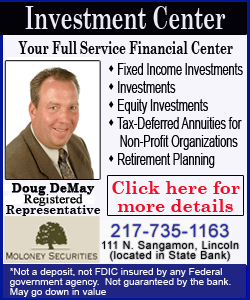|
Central bankers eye
public spending to plug $1 trillion investment gap
 Send a link to a friend
Send a link to a friend
 [August 25, 2016]
By Howard Schneider [August 25, 2016]
By Howard Schneider
JACKSON HOLE, Wyoming(Reuters) - While
markets wait for Janet Yellen's latest message about the direction of
monetary policy, the Federal Reserve chief and her colleagues already
have one for politicians: the U.S. economy needs more public spending to
shift into higher gear.
In the past few weeks, Yellen and three of the Fed's other four
Washington-based governors have called in speeches and Congressional
hearings for government infrastructure spending and other efforts to
counter weak growth, sagging productivity improvements, and lagging
business investment.
The fifth member has supported the idea in the past.
The Fed has no direct influence over fiscal policy and its officials
traditionally refrain from discussing it in detail. Having its top
officials - from Yellen to former investment banker and Bush
administration official Jerome Powell - speak in one voice sends a
strong signal to the next president and Congress about the limits they
face in setting monetary policy and what is needed to improve the
economy's prospects.
The Fed's annual conference in Jackson Hole, Wyoming, where Yellen
speaks on Friday, is due to focus on how to improve central banks'
"toolkit," but the unanimous message from the Fed's top policymakers is
that those tools are not enough.
"Monetary policy is not well equipped to address long-term issues like
the slowdown in productivity growth," Fed vice chair Stanley Fischer
said on Sunday. He said it was up to the administration to invest more
in infrastructure and education.
TRILLION DOLLAR HOLE
Behind Fischer's statement lies a troubling feature of the recovery -
business investment has fallen below levels in prior years and companies
seem to have stopped responding to low borrowing costs.
As a share of gross domestic product, U.S. annual business investment
since 2008 has averaged nearly a full percentage point below the
previous decade's average, government data shows. Reuters calculations
indicate the investment shortfall has blown a hole in annual GDP that
has grown to as much as one trillion dollars a year compared with what
it would have been if the previous trend continued. (Graphic:
http://tmsnrt.rs/2bcisE2)

Little suggests a rebound any time soon. Fixed business investment has
fallen in three successive quarters as a share of GDP. Researchers and
analysts blame the slide on everything from doubts about future economic
growth to distortions caused by Fed policy itself in helping boost the
value of financial assets.
Companies have run up share buybacks to record levels of around half a
trillion dollars a year, and held onto record amounts of cash, despite
cheap financing that should in theory spur long-term investment.
Research by Fed board economists Steven A. Sharpe and Gustavo Suarez
suggest a reason: executives are putting little stock in interest rates
when making investment decisions, and are not adjusting expected rates
of return to fit the emerging low-growth world.
Based on data collected from chief financial officers, their study found
the internal rate of return needed to justify capital projects has
"hovered near 15 percent for decades," and barely budged even as global
interest rates have fallen. Such targets made sense during spells of
strong growth, but may be inconsistent with the current low-growth,
low-interest rate environment, and hold back corporate spending, the Fed
economists argue.
That challenges the core monetary policy notion that low short-term
rates spur investment by making long-term returns more attractive.
[to top of second column] |

"I have started to wonder, and many wonder, as rates stay at zero,
whether that may not be true anymore,” former Fed Governor Jeremy Stein
told Reuters.
The situation has perplexed analysts, with some suggesting executives
may be out of synch with a low-growth world.
“I am not sure that people’s notion of an adequate return on equity has
come down as much as the riskless rate,” said Thomas Mercein, global
head of debt capital markets for Credit Suisse.
The Jackson Hole conference will likely take stock of several
unconventional solutions proposed as a way of breaking out of the cycle
of subdued demand, weak investment and low growth that has followed the
2007-2009 recession.
U.S. and global central bankers have brought into the mainstream such
ideas as GDP targeting or "helicopter" cash injections to generate
demand and inflation, and have been testing negative interest rates in
Europe and Japan.

Fiscal policy is not on this year's agenda, which is dedicated to the
details of monetary policy operations. But the idea that governments
need to pick up the slack with infrastructure spending or other
initiatives has been gaining traction among central bankers.
Well-targeted public investment, the argument goes, could in effect pay
for itself through higher productivity and growth, and in doing so make
any additional public debt comparatively less onerous.
Japan, which has been running sizeable fiscal deficits since 2009, has
already announced another spending package to complement negative rates,
while Britain's new finance minister has said he would look at whether
new fiscal measures are needed in the wake of the country's vote to
leave the European Union.
RARE AGREEMENT
In the United States, the need for investing in the nation's aging
infrastructure is a rare point where both presidential candidates seem
to agree. Democrat Hillary Clinton is proposing a $275 billion package;
Republican Donald Trump is calling for about twice that.
Not everyone agrees though, that more public spending is the best cure,
or that an infrastructure program would pinpoint projects with a
positive return.
“Economic policy should bolster private investment. Yet, it is striking
that most academics and policymakers are pushing another big government
spending stimulus package," said former Fed governor and Hoover
Institution fellow Kevin Warsh.
However, there is broad agreement that, for now, private investment may
remain in the doldrums - unless it is clear the economy is picking up.
Bill Lutz, chief financial officer of Illinois-based industrial services
provider Advanced Technology Services, said the still low factory
utilization and doubts about growth and demand have set a high bar for
any private investment that was not necessary to maintain output or
offered compelling savings.
"You'll find a way to finance if it is real and strategic," Lutz said.
"Whether the interest rate is a percent higher or lower is secondary."
(Reporting by Howard Schneider; Editing by David Chance and Tomasz
Janowski)
[© 2016 Thomson Reuters. All rights
reserved.] Copyright 2016 Reuters. All rights reserved. This material may not be published,
broadcast, rewritten or redistributed.
 |